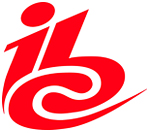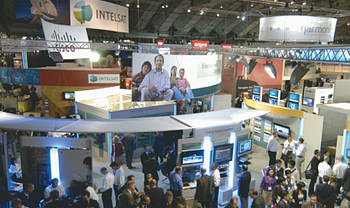IBC Gets Down to Business
AMSTERDAM, THE NETHERLANDS
As the global economic downturn continues, IBC2009 is set to focus on tackling the credit crunch and looking forward to new business models.
While the annual Amsterdam techfest may have lost some long-term exhibitors with companies such as Sony and Snell pulling out, Quantel is back (after missing the NAB Show) and the show has lined up a number of experts to advise on how technology firms can survive the recession.
Speaking on the lineup for the show, now in its 42nd year, chair for the conference committee David Crawford explained that in the current economic climate the conference needed to take a good look at the business side of the industry.

“We simply cannot bury our heads in the sand: we have to tackle the massive shifts in commercial balance. These are driven by new technologies every bit as much as economic circumstances, so IBC2009 is clearly the right forum for this debate,” he said.
As usual this year’s IBC confab takes place at the RAI Exhibition and Congress Centre in Amsterdam, with the conference running from Sept. 10–14 and the exhibition set for Sept. 11–15.
CONFERENCES
A recession-busting “business of broadcasting” stream runs through each day of the conference and encompasses the main keynote this year given by Erik Huggers, director of future media and technology at the BBC. During his time at the BBC Huggers oversaw the rapid development of the broadcaster’s iPlayer catch-up service and his keynote, “Identifying Growth Areas in the Broadcasting Industry” should include an outline of its successful development and deployment.
Another session, “How to Survive and Prosper” looks at how broadcast technology companies are coping and planning for the future. Chaired by Adrian Scott, founder and principal of The Bakewell House Consultancy, the session features the reflections of some of the people who lead manufacturing and service companies including Grass Valley’s Jeff Rosica as well as senior figures from Omneon, Gravity Media and the Vitec Group.
According to Scott, manufacturers are all trying to work out where broadcasters are going.
“Equipped with affordable and astonishingly powerful devices, consumers have risen up off the couch and are demanding content in many forms, when and where they want it.” Scott said. “Traditional funding models may no longer be valid for many broadcasters, and that is demanding that both they and their suppliers address the task of business transformation with ever greater urgency.”
Other key themes at the conference this year include news and sports broadcasting, with Arnaud Simon, broadcast director of Eurosport and Eurosport 2, lined up for a keynote to mark the broadcaster’s 20th anniversary. And Roger Mosey — the BBC’s Olympic Czar for 2012 — is set to give IBC delegates an early taste of what audiences can expect from the broadcaster’s own coverage of the event.
EXHIBITORS
Some firms have announced that they are eschewing this year’s event in favor of concentrating their marketing efforts on a series of localised events. Other players, meanwhile, are back on the circuit.
According to Steve Owen, Quantel marketing director, the company’s customers were keen to see them in Amsterdam.
“In coming to our decision to participate at IBC2009, we took account of our customers’ wishes, who’ve all expressed a desire to meet with Quantel at the show,” he said. “We will be showing and discussing some important new developments that are just now finding their way out of our R&D lab.”

More than 49,000 attendees packed nearly 1,000 exhibits throughout the 12 halls of the RAI last year. Organizers are cautiously optimistic for the same or better results this year. Quantel will showcase a number of developments in color correction and finishing for HD, 2K, 4K and Stereo3D at its stand, Owen said. The Neo Panel on Pablo, Quantel’s nonlinear colour correction suit, has also been upgraded and is now capable of building and modifying tables.
There will also be a big push on broadcast servers for news and sports production systems and the once notoriously closed OS manufacturer has now opened up its systems to other editing manufacturers.
“For the first time ever you will see Final Cut Pro working on our servers. People buy servers because of the workflow. We can offer exactly the same workflow on our servers while using FCP,” Owen said, adding that the combination of Quantel servers and FCP editing really looks set to boost workflow for editors. “You will be able to edit on clips that are still being recorded through our Expanding Clip option. Our big theme this year is file-based workflow and the use of virtual files — known as virtualization — to make this workflow much more efficient.”
Set-top box provider Advanced Digital Broadcast (ADB) is using this year’s show to demonstrate how it is enabling television, Internet and personal content to converge and be accessible where consumers enjoy it most: on their flat-screen TV.
“We expect content convergence to be a major theme of IBC2009,” said ADB’s chief executive, Francois Pogodalla. “At IBC2009, we will show how our high-performance and hybrid set-top boxes enhance the consumer TV experience and reduce total cost of ownership to enable operators to deliver this new television experience while minimizing capital and operating costs.”
Ericsson and Tandberg Television meanwhile are set to launch a number of products designed to pave the way for an industry-wide migration towards an all-HD television universe.
“Our aim is to help operators to meet the growing consumer expectations for all HDTV entertainment, said Carl Furgusson, Tandberg vice president of compression product management. “Having provided a quantum leap in MPEG-2 compression performance earlier this year with our launch of the EN8100 encoder, which slashes bit rates by up to 30 percent, we come to IBC2009 to raise the bar for MPEG-4 HD compression in both the direct to home (DTH) and contribution and distribution (C&D) markets. By delivering the combination of better picture quality, higher bandwidth efficiency and lower total cost of ownership that will enable the introduction of more HD and SD television we are making the vision of “HD as the new SD” realistic without compromising the ‘wow’ factor of HDTV.”
Get the TV Tech Newsletter
The professional video industry's #1 source for news, trends and product and tech information. Sign up below.
